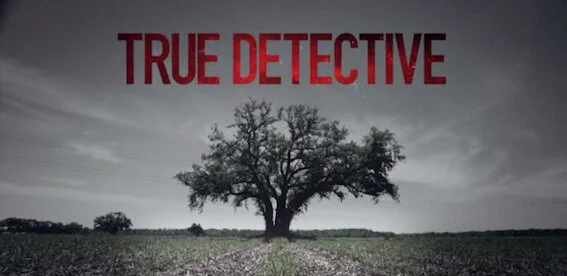Netflix India
Contributed by Ishita Tiwary
July 2017
Key Takeaways
Infrastructure and bandwidth limitations mean that Netflix is not usable or attractive for most Indians
While Netflix has been licensing local titles, its selection of Indian film and TV choices is seen as poor
Netflix is a very expensive choice for most Indians, who prefer lower-priced local services or piracy/sharing of content
The country’s strict screen censorship is a regulatory challenge that Netflix may need to carefully negotiate in future
Market
To understand Netflix’s position in the Indian market we need to understand how Indians consume media both legally and illegally. Among the lower classes, movie and music consumption in India often involves downloading pirated films and swapping memory cards filled with video content, which can be acquired from local kiosks and inserted into a mobile phone. These are the main ways in which lower-income people consume content. Netflix is not a feasible or affordable option for these audiences.
Among the middle classes, the smartphone has become the primary method of internet access for majority of the population and also serves as the primary entertainment hub for users.
According to a Ficci-KPMG report, India is expected to have 500 million Internet users by 2017, out of which 382 million would be smartphone users. This makes India a fast-growing market for digital media services, at least among the middle classes. According to the consulting firm EY, India is the second-most attractive emerging market in digital media behind China, notable for its level of smartphone penetration. Almost half of its 1.25 billion people are aged under 25. Cisco Systems Inc. estimates there will be 651 million devices in India by 2019. The digital advertising market is estimated to be around Rs 4,000 crore and is growing at 35-40 per cent each year.
As the smartphone and app economy has evolved, audio streaming has also migrated to mobile phones (note that it was audio streaming services that first made inroads into the Indian market, followed later by video streaming services). Subscription based Video streaming services such as SonyLIV (owned by Sony’s Indian subsidiary Sony Pictures Networks) and Hotstar (owned by 20th Century Fox’s Star India) are luring customers with a catalog of English-language content, as well as the promise of uncensored content (a key point of differentiation from Indian TV). Uday Sodhi, executive VP and digital business head of Sony Pvt Entertainment India states that, “We are trying to add more and more movies to the library,” he told ET. “Consumers who consume content in English have always been associated with higher spending power.” Hotstar has a library that includes the HBO originals library such Game of Thrones, True Detective, Veep, Girls, and Silicon Valley.
Local players have launched their own streaming services. The Mumbai-based movie studio Eros International, which releases 70 films a year, shelved a plan to create a television network to focus instead on a video-on-demand offering, Eros Now, which is optimized for mobile devices and priced for widespread adoption. According to CEO Krishka Lulla, Eros Now’s situation in the Indian market is “exactly where Netflix wants to be in the next three to five years.” The company has its own catalogue of 2000 films and Bollywood songs and music videos to build a critical mass of devoted users.
Platforms are also increasingly commissioning original content. Sony LIV launched a series known as Love Bytes in September 2015, while Hotstar has partnered with the popular comedy group AIB (All India Bakchod) to produce a new comedy show that addresses issues of local and national interest.
Regulation
The key issue that streaming services must negotiate in India is censorship. The Indian Broadcasters Federation created a set of self-regulatory guidelines 2011 intended for all non-news channels to avoid running afoul of the government. Paranoid about licenses, this led the channels to a massive self-censorship drive. Foul language (including terms like “hell” and “butt”) are deemed offensive and are therefore either muted or changed in the subtitles.
At present, Netflix does not censor its content for the Indian market. Chris Jaffe, the company’s Vice President (User Interface Innovation), says “Our goal is to comply with local rules and regulations but at this point there’s no censorship of anything on the service… Consumer control, informing the consumer and giving the consumer tools to manage what’s right for them and their families is the most important thing. We want to abide by any local regulations and we want to respond and see what happens on a case-by-case basis.”
It is important to note that in India, movies require a censor certificate from the CBFC (Central Board of Certification); however this rule does not apply to television shows. If a viewer is offended by content broadcast on a channel they can make a complaint, with the penalty being quite severe. For example, in 2010 Fashion TV was banned in India for 10 days for showing a clip of a topless model. In 2014, Comedy Central was off air for 6 days based on a complaint filed by a viewer in 2012. These severe penalties have led TV channels to become almost paranoid in their self-censorship. However there is some confusion as to whether these standards apply to streaming services. The example of Hooq might give us some clues. Its co-founder Krishna Rajgopalan has stated that,“The laws aren’t clear on this matter, and while we will comply with all laws, right now we don’t believe we should be altering content.”
Internet Pricing and Availability
One of the major issues facing the Indian video streaming market is that of bandwidth. Slow internet speeds and small data caps (also known as ‘fair usage policy’ limits) have limited this growth, although the scenario is expected to change with the arrival of 4G services and improvement of broadband. “Till recently video streaming services were pegged back due to the inadequate data infrastructure in India,” says Hungama CEO Siddharta Roy. “With telcos rolling out 4G services Pan-India, 2016 will be a year for growth of video consumption.”
The minimum bandwidth requirements of Netflix streaming (which requires between 300 megabytes and 3 gigabytes of data per hour, depending on resolution) mean that Indians with a typical internet connection speed of 1-2Mbps will struggle to use Netflix effectively. Watching a handful of movies and TV shows could eat up a little over half of a user’s data cap, make them quickly hit their FUP (fair usage policy) limit, and have their Internet speeds reduced to 512 Kbps.
Pricing is another key difference between Netflix and other local streaming services. Netflix is considerably more expensive that its competitors: the monthly cost is currently 500 rupees for the basic package. In contrast, SonyLIV’s subscription packages begin at 49 rupees per month and Hotstar costs 199 per month.
Content
The issue of content has been a major topic in the media with the arrival of Netflix. In the Indian market, the Netflix catalogue is known to be smaller than the American version, and Netflix, unlike other streaming services, has not invested heavily in producing its own local content. Netflix CEO, Reed Hasting, when questioned in 2016 about the development of local content replied that the company is focused first on sharing global stories and global titles. Chitavan Patel, director of Content Acquisition at Netflix India, stated that “We’ll have all of our original series along with a host of US Hollywood movies and TV shows. In India in particular we’ve licensed almost a hundred local Indian Bollywood titles; classics, some recent ones, and some indie cinema that we’re excited about.”
So far Netflix has licensed some regional content in the Gujrati and Punjabi languages alongside marquee American series such as Breaking Bad, Better Call Saul, Suits, and Arrow. As Patel states, “What’s really important is that now that we’ve launched, we get to see what people are engaging with and as soon as we see what’s popping and what people want more of, we’ll add more of that content…Over time, we are exploring that in all of our larger markets, and India being such a great production hub, we are exploring opportunities as well”.
Because of its small catalogue in India, Netflix is also facing the issue of Indian users accessing the company’s US catalogue through Virtual Private Networks (VPN). In response the company started blocking VPNs globally in 2016 and Indian users have since been redirected to the Indian site. According to analyst Abneesh Roy of Edelweiss Securities, Netflix is focusing on its long-term goals. “The company would want Indian consumers to pay in Indian currency for their long-term strategy. With consumers from India using VPNs, this purpose is defeated. It needs to get the pricing and content right to build the base. From the consumers’ point of view, why would he pay a premium here and get access to a truncated library in India when he can pay $10 or $12 and get access to the full content library in the US. It will take a couple of years for Netflix to get a robust library for India.” It is this conundrum that calls for Netflix to acquire and develop India-specific content
Suggested Resources
KPMG-India FICCI Indian Media and Entertainment Industry report
Research by Ritika Pant, Sarai programme CSDS
Barriers to Internet Access: Towards Digital Inclusion, A study by the Center of Communication and Development Studies, 2015.



